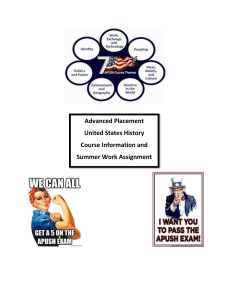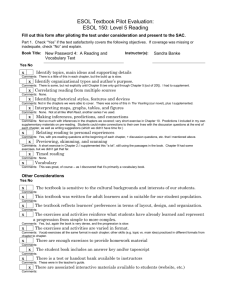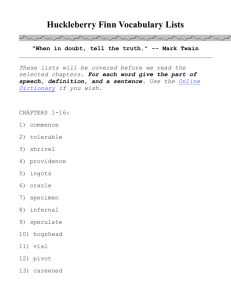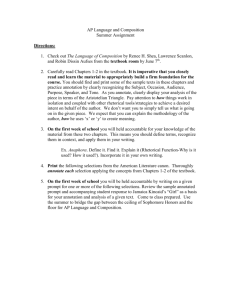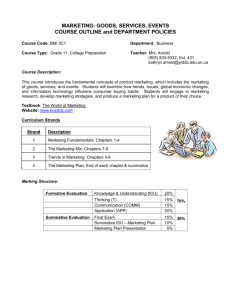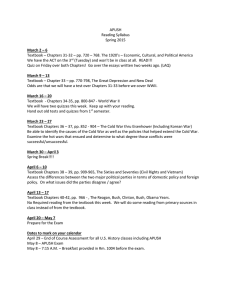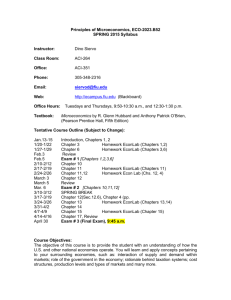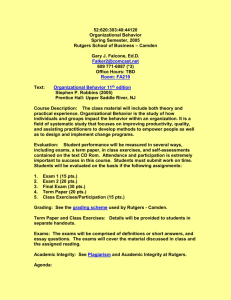MGT-672 STRATEGIC MANAGEMENT
advertisement
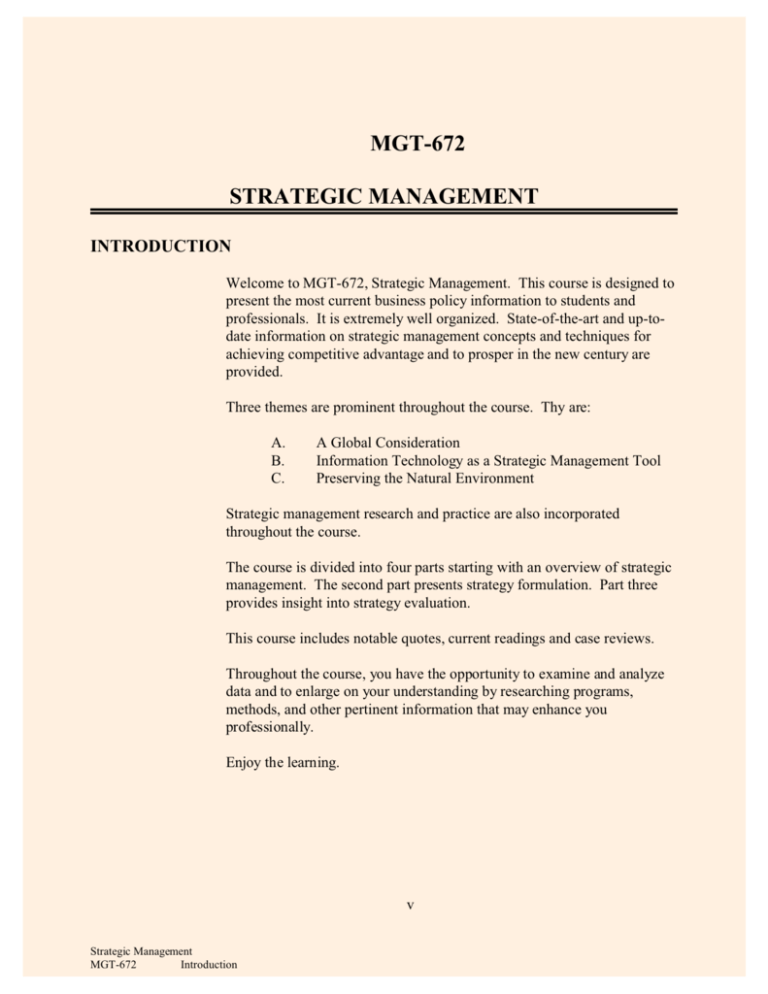
MGT-672 STRATEGIC MANAGEMENT INTRODUCTION Welcome to MGT-672, Strategic Management. This course is designed to present the most current business policy information to students and professionals. It is extremely well organized. State-of-the-art and up-todate information on strategic management concepts and techniques for achieving competitive advantage and to prosper in the new century are provided. Three themes are prominent throughout the course. Thy are: A. B. C. A Global Consideration Information Technology as a Strategic Management Tool Preserving the Natural Environment Strategic management research and practice are also incorporated throughout the course. The course is divided into four parts starting with an overview of strategic management. The second part presents strategy formulation. Part three provides insight into strategy evaluation. This course includes notable quotes, current readings and case reviews. Throughout the course, you have the opportunity to examine and analyze data and to enlarge on your understanding by researching programs, methods, and other pertinent information that may enhance you professionally. Enjoy the learning. v Strategic Management MGT-672 Introduction INTRODUCTION (continued) Subject Index: The last pages of your textbook provide a comprehensive index of topics covered in the course. The index can be useful as a quick reference to specific topics you may want to review. Company Index: An alphabetical list of each company that is referred to in the text. USING THE COURSE STUDY GUIDE This Study Guide has been prepared in conjunction with the material in your textbook. Use the Study Guide as an instructional tool to help you progress through the course. This course consists of 9 Chapters grouped into 4 Lessons. Lesson II has been divided into Parts I and II. To ensure success of this course and achieve understanding of the Chapter contents, it is vital to read all 9 Chapters and complete the required assignments. It also includes two Projects, two researched Articles and a open book proctored multiplechoice final exam, including essay questions. COURSE STRUCTURE The Study Guide includes the following: Introduction: A summary of the information presented in the text’s Chapters. The introduction will help you put the material in context. Learning Objectives: Objectives describe what you should be able to do upon completing the learning tasks. The objectives will work as guides. You can use the objectives as a checklist to gauge and verify your skills and understanding of the material. Assignment: To complete each Chapter, you will be required to read the corresponding chapter in your text book. Respond to the Review Questions and selected Exercises. An open book Multiple Choice exam at the end of each Lesson is also required. ix Strategic Management MGT-672 Introduction LESSON II, PART I CHAPTER 2: THE BUSINESS MISSION This Lesson covers Chapters 2, 3 and 4. INTRODUCTION This Chapter addresses the business mission and focuses on the concepts and tools needed to write business mission statements. The Chapter presents a practical framework for developing a mission statement. The Chapter also provides for review and examination of actual mission statements or organizations, large and small, and profit and nonprofit enterprises. The distinction of a vision statement and mission statement is provided as well as a discussion of the process of creating both statements. The Chapter also describes the nature and importance of organizational values and mission statements. Mission statement guidelines are presented. The Chapter concludes discussion and illustrating the nine components of a mission statement. A. Components and Questions That a Mission Statement Should Answer 1. 2. 3. 4. 5. 6. 7. 8. 9. Customers: Who are the firm’s customers? Products or Services: What are the firm’s major products? Markets: Geographically, where does the firm compete? Technology: Is the firm technologically current? Concern for survival, growth, and profitability: Is the firm committed to growth and financial soundness? Philosophy: What are the basic beliefs, values, aspirations, and ethical priorities of the firm? Self-concept: What is the firm’s distinctive competence or major competitive advantage? Concern for public image: Is the firm responsive to social, community, and environmental concerns? Concern for employees: Are employees a valuable asset of the firm? 18 Strategic Management MGT-672 Introduction EXERCISES (NO RESPONSE REQUIRED) Memory Challenge. No response required. True & False. Introduction 1. A clear vision provides the foundation for development of a comprehensive mission statement. (True) 2. If an organization chooses to have both a mission and a vision, the mission statement should be established first, as mission identifies where we are and vision would indicate where we want to go. (False) 3. Vision and mission statements can often be found in the front of annual reports. (True) What is Our Business? 4. Formal mission statements are being developed by an increasing number of organizations. (True) 5. A mission statement should describe an organization’s purpose, customers, products or services, markets, philosophy, and basic objectives. (False) 6. The mission statement is a declaration of an organization’s “reason for being.” (True) 7. A statement of corporate beliefs is synonymous with the term mission statement. (True) 8. Whereas the mission statement answers the question “What do we want to become?” the vision statement answers the question “What is our business?” (False) 9. Sometimes called a creed statement, a mission statement can be defined as an “enduring statement of purpose that distinguishes one organization from other similar enterprises.” (True) 10. The long-term aspirations of an organization in terms of what it wants to become can be described in a vision statement. (True) 21 Strategic Management MGT-672 Introduction


